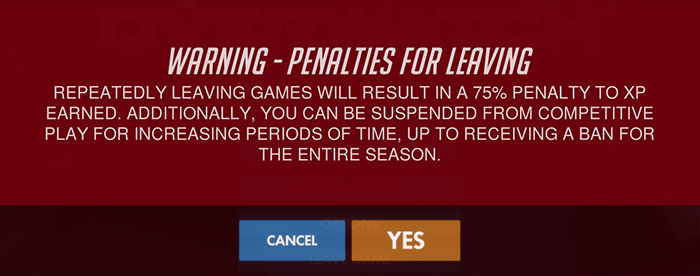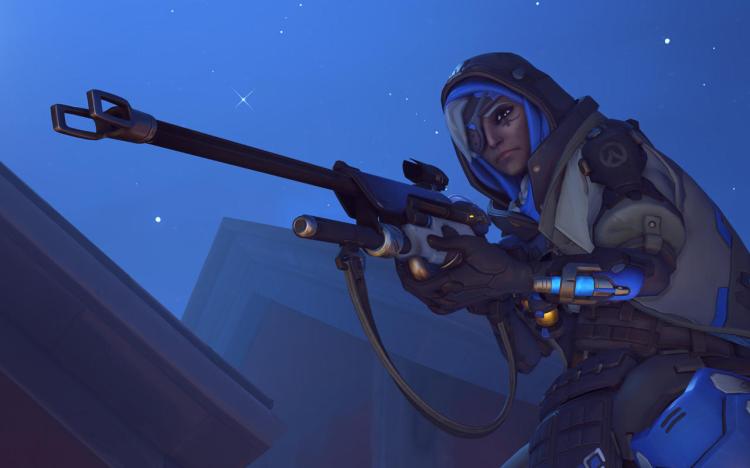Blizzard isn’t afraid to make sweeping changes to its games, and Overwatch is a continuing example of why this approach works.
The publisher released an update for its class-based shooter last week, and it introduced a revamped competitive mode that fixes many of the problems with ranked play. Overwatch, which is a modern mashup of the action you’d find in Team Fortress and the characters you’d meet in G.I. Joe, is already popular for its casual, quick play mode. But the first season of competitive wasn’t fun at all. That’s because people who quit a fight early plagued matches and unbalanced Sudden Death overtimes often gave one team an advantage over the other. And through all of this, the ranking system made every loss a painful setback in your climb up the competitive ladder.
Blizzard addressed those problems with several key changes, and now Overwatch should win over both casual audiences and a crowd hungry for an esports-like experience.
A skill rating that feels good
In the first season of Overwatch, you could end up with a skill rating between 1 and 100. For the second season, Blizzard expanded that number from 1 to 5,000, but that’s only part of its solution for fixing the way players feel about their rating. The studio also introduced rank tiers that go from Bronze up to Diamond, moving higher to Master and Grandmaster for the best players in the world.

Above: The new skill tiers in Overwatch’s competitive mode.
This means you don’t really think of yourself as a number. I ended my 10 placement matches with a skill rating of 2,380, but I refer to myself as a Gold player. I only pay attention to the number if I get close to 2,500, which is the start of the Platinum tier.
In this method, Overwatch loses still hurt, but they are not nearly as painful as they were in Season 1, when you would lose several ranks after every bad match. Because of this, I can play the competitive mode longer even when I’m in a rut.
Rules that make sense
Another reason that I am putting a lot more time into the Overwatch’s competitive mode is that the weird Sudden Death rules no longer leave me burned after a tough loss. Blizzard dropped Sudden Death for this season. Instead, it has a time-bank system that it uses in all of its game types.
Under these rules, it tracks how long each side has after they compete their objective. If your squad pushes hard, you might have around 2 minutes left on the clock when you push a payload past all three checkpoints. If your opponents also scores all three checkpoints, the match will go into extra rounds, where each side will get to use their remaining time to score more points. The overtime rules have a number of caveats and clauses that make it simultaneously complex and intuitive.
These rules echo traditional sports. Every moment falls under regulation, and that gives you the confidence that neither side has an unfair advantage.
Blizzard also reduced the length of each round by 60 seconds. This makes matches go by much quicker, and it guarantees you likely won’t end up in a 30-minute control-point game that goes all five rounds.
No mercy for quitters
In the 15 or so games I played during Season 1, I had people drop off of my team a third of the time. In the 30 or so games I’ve played for Season 2, I’ve only seen people quit maybe one out of every 10 times — and only once was that someone from my team.
Blizzard is doing a decent job of discouraging players from rage-quitting through a combination of bans and XP penalties. These will block players from playing competitive for certain periods of time that may include the entire season for repeat offenders. Additionally, those who drop out on purpose may earn only a quarter of their experience points for a number of games before returning to good standing.

Above: Don’t quit.
And Blizzard also added a 10-minute ban for anyone who leaves a match that is in progress. If you try to join another match, you’ll either get a message about rage quitting or you’ll get thrown back into your competitive match to play it out.
Looking forward to future seasons
I didn’t think I would care about competitive play in Overwatch. Quick play was fun, and it didn’t bum me out the way season one did. But season two is so much better that I now find myself primarily booting into the ranked mode. I even occasionally talk to people to ensure better coordination. I’ll probably never get out of the Gold tier, but I’m going to keep trying for as long as Blizzard keeps putting this much effort into maintaining the quality of the competitive experience.
VentureBeat's mission is to be a digital town square for technical decision-makers to gain knowledge about transformative enterprise technology and transact. Learn More

